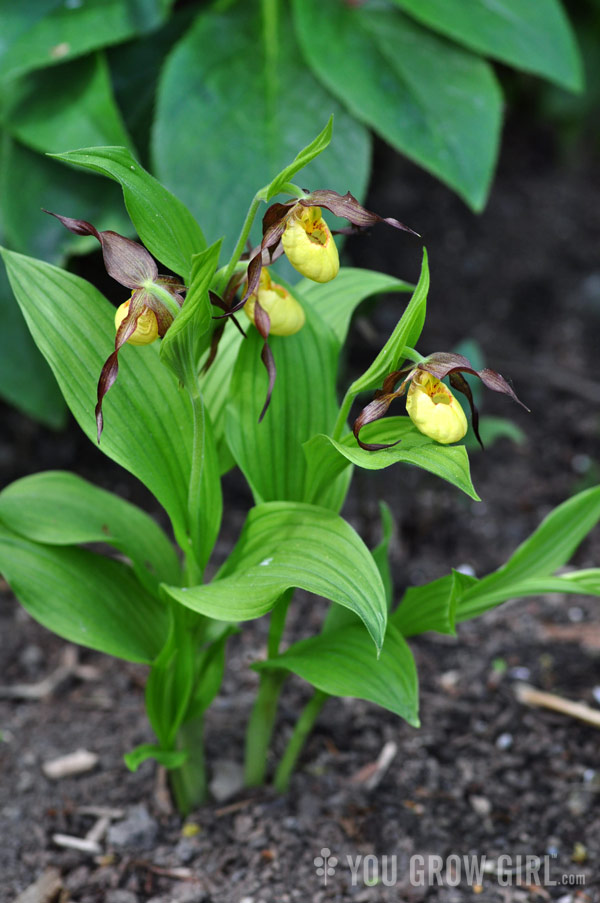
These Lady’s-Slipper orchids are currently in bloom in my friend Barry’s garden. If you can make it to his garden open house this weekend you’ll get a chance to see these and a few other species in person.
When we think of orchids, we tend to think of those finicky tropical flowers that are so often difficult to grow without the benefit of a heated greenhouse. Amazingly, some species of Cypripediums are cold hardy and even fewer still are native to the so-called cold north. You can still find them growing in woodland habitats in protected parks across this part of North America. I was lucky enough to catch one in bloom on a trip to Lake Huron several years back. I didn’t even have to go out to a protected spot — the plant was growing in the lot behind our cottage!
I LOVE Lady Slippers! We have Fairy Slippers (Calypso Bulbosa) that grow wild here in the Sangre de Cristo mountain range as well as the Wet Mountains of southern Colorado. 9000 feet! Father’s Day is our day to go a huntin’!
We used to find Lady Slippers in the woods around our house when I was a kid. Back then we didn’t know not to pick them. It’s been years now since I’ve seen one.
Ladyslippers grow wild in neighboring Minnesota, where we often vacation. In fact it is their state flower. I think they are just beautiful.
I love these and would like to find some growing in the wild. I have yet to see one here.
I saw some Pink Lady’s Slippers in a nature reserve in Lexington, MA this weekend. I wouldn’t have known what they were without your post!
Laura: That’s great!
I just bought a house this Jan. and as the spring blooms, out some tons of flowers and plants. One of which is this exact flower. Beautiful !
and if they can bloom in freezing Winnipeg, I would think that they can bloom anywhere
I believe Canada has more than 75 native orchid species, and it’s nice to know there are healthy
Cypripedium populations. Many other species have smaller or less colorful flowers, but they’re fascinating no matter what! Thanks for the beautiful photo.
lovely images – these are on our endangered species list in the UK – now just growing on a few protected sites :(
Laura